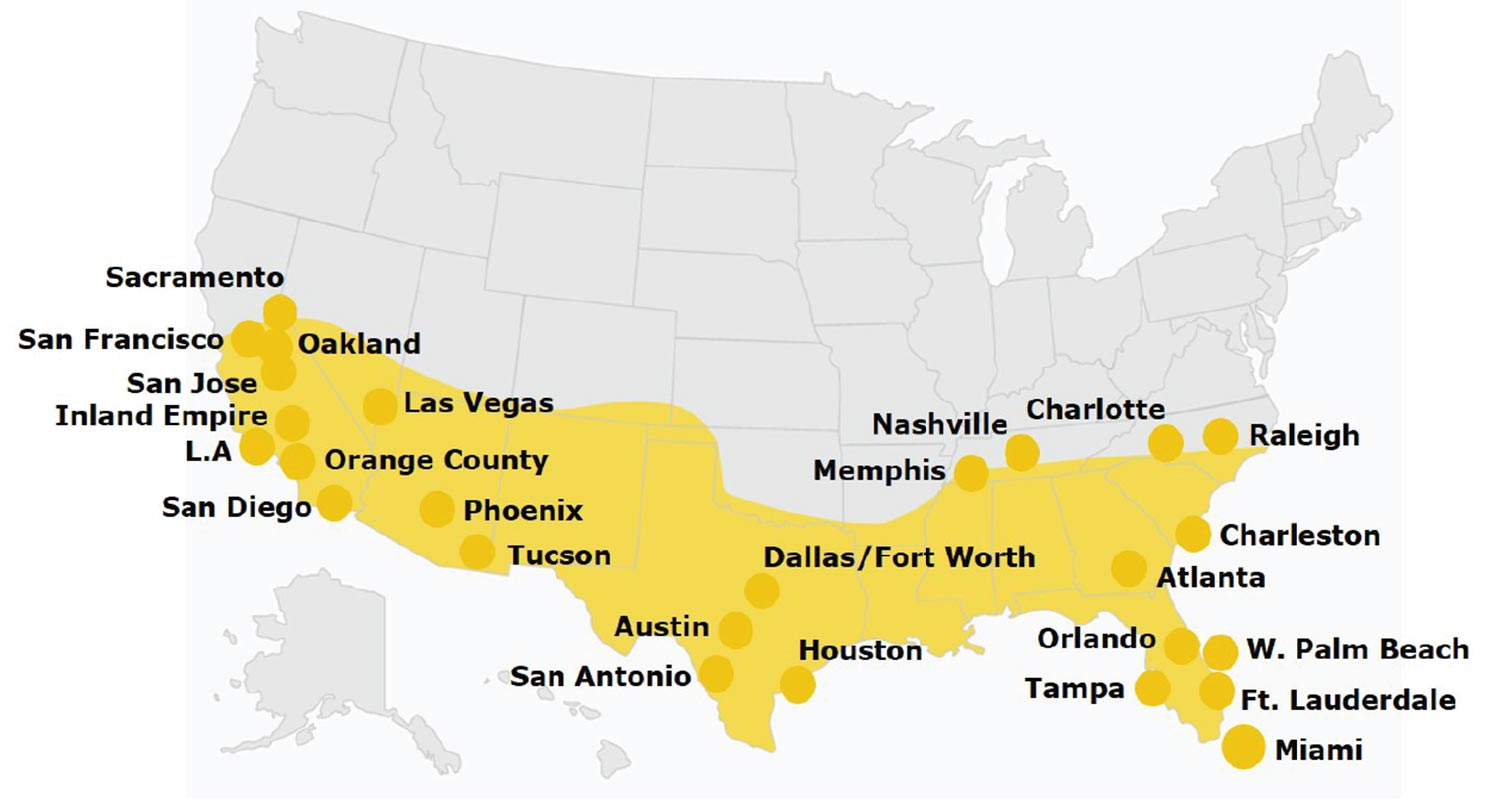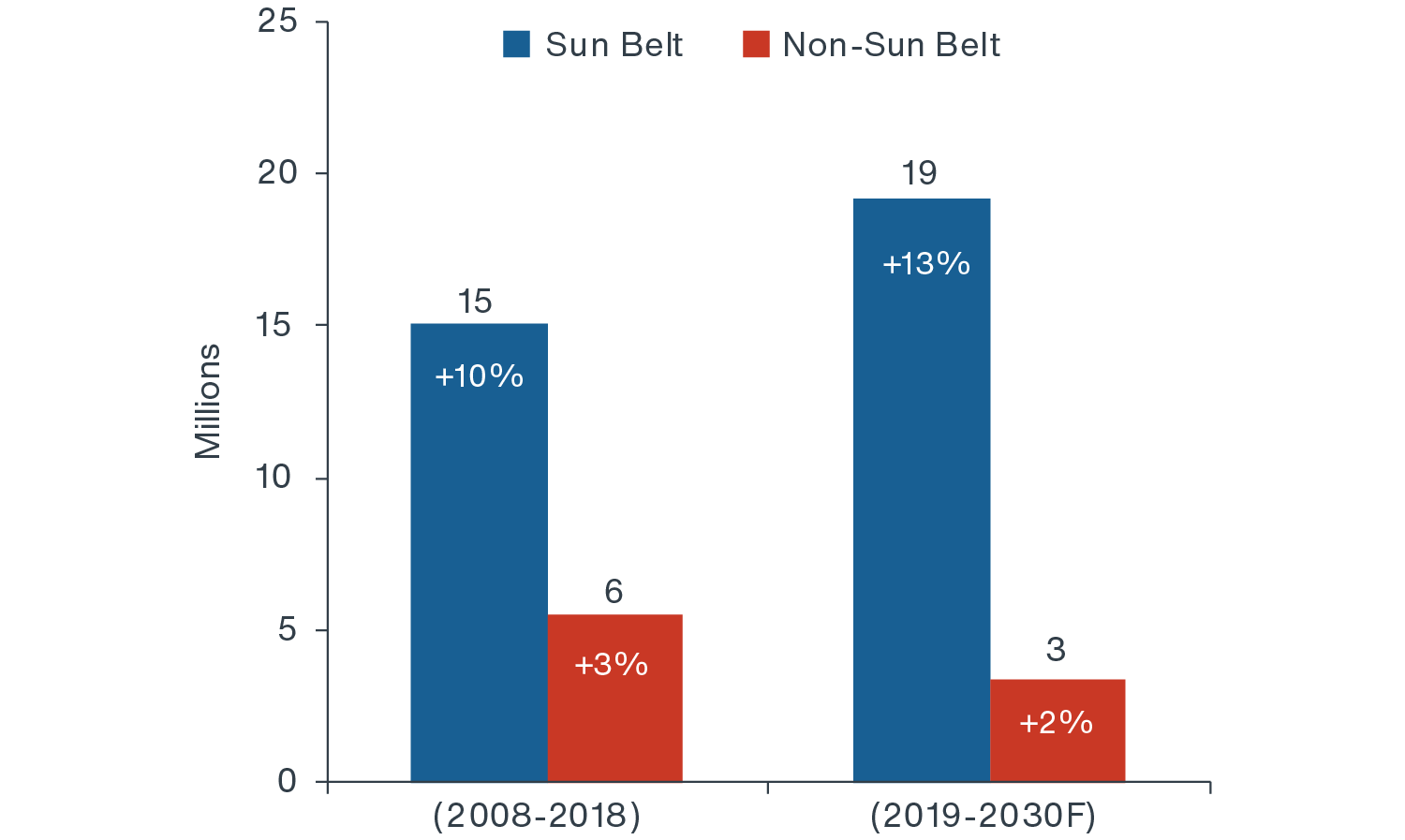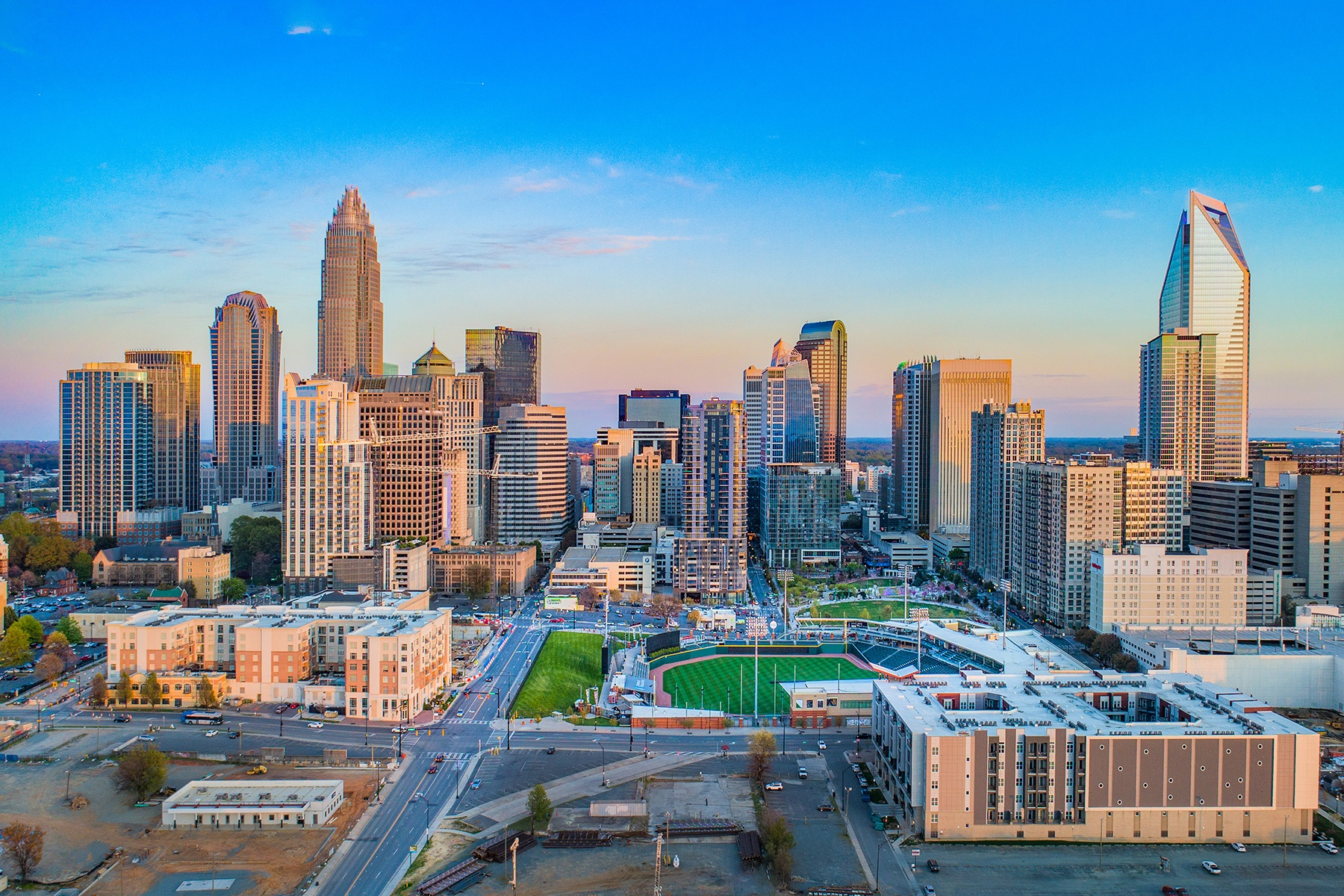
Key Takeaways
- Rapid Population Growth: The Sun Belt is growing faster due to high migration rates and natural increases, surpassing many other U.S. regions.
- Attraction Factors: Affordable housing, economic opportunities, and a warmer climate draw people from the Midwest and Northeast.
- Economic Diversity: The region’s robust job market in technology, manufacturing, and other sectors attracts a broad workforce.
- Affordable Living: Relative to the high-cost coastal cities, the Sun Belt offers more accessible housing prices.
- Broad Demographic Appeal: Its growth mirrors national migration trends, with a wide demographic seeking better economic and living conditions.
- Emerging Challenges: Infrastructure, sustainability, and social equity issues must be addressed to manage rapid growth effectively.
- Sustainable Development: Continued attractiveness depends on balancing growth with environmental and social considerations.
- Reflective of American Shifts: The Sun Belt’s evolution signifies broader shifts towards regions offering economic viability and a sustainable lifestyle.

These points highlight the Sun Belt’s significant impact on America’s demographic and economic landscape, emphasizing the region’s potential and challenges ahead.
The Sun Belt, a broad region that encompasses the southeastern and southwestern United States, has become synonymous with growth, opportunity, and demographic shifts that are reshaping the nation’s landscape. The Sun Belt typically includes the following states:
- Alabama
- Arizona
- Arkansas
- California (southern part)
- Colorado
- Florida
- Georgia
- Louisiana
- Mississippi
- Nevada
- New Mexico
- North Carolina
- Oklahoma
- South Carolina
- Tennessee
- Texas
- Utah
Other southeastern states are Kentucky and West Virginia (see figure above for full list).
This in-depth exploration by Brickfront Properties and Construction‘s Local Washington DC Construction delves into the reasons behind the Sun Belt’s burgeoning popularity, examining the interplay between population growth, economic trends, and societal movements that have positioned the region as a focal point of contemporary American life.
The Dynamics of the Sun Belt Population Growth

At the heart of the Sun Belt phenomenon is its extraordinary population growth. Over the past decade, the sun belt metro areas have seen an influx of residents at a rate unparalleled in most other parts of the country, according to newly released Census data. This growth is not merely a function of birth rates but is significantly propelled by migration patterns. Individuals and families from across the United States, particularly from the Midwest and Northeast, have been drawn to the Sun Belt’s promise of a brighter future. States such as Texas, Florida, Arizona, and South Carolina have witnessed their total population numbers swell in recent years, reflecting a broader trend of southward and westward migration within the national population.
Gradually, when the national labor and housing markets started to resurface, Sun Belt growth started to accelerate. The net migration to the area increased to about 600,000 by 2015–16, while the growth differential increased to more than 0.9 percent. However, net migration gains decreased substantially in the previous year to 470,000, bringing the growth disparity down to 0.75 percent.
Unpacking Migration Trends: The Lure of the Sun Belt
Migration to the Sun Belt is driven by a confluence of factors. The region offers a compelling proposition with its generally mild climate, lower cost of living, and vibrant economic opportunities. The contrast with other regions is stark, particularly with the high-cost metros of the Northeast and West, including New York and California, where net out-migration has become a significant trend. The Sun Belt’s allure is multifaceted, attracting a diverse demographic from retirees seeking affordable living options to young professionals in search of career opportunities and a better quality of life.

Over the next decade, Sun Belt population growth is expected to accelerate by another 19 million (+13%), whereas non-Sun Belt states are forecasted to rise by only 3 million (+2%).3 All ages are drawn to the area more and more for its business-friendly environment, lower cost of living, quality of life, and mild climate.
Economic Vibrancy and Housing Affordability
The Sun Belt’s economic landscape is as diverse as it is dynamic. From the tech hubs in cities like San Antonio and Austin to the manufacturing and service industry growth in places like Phoenix and Las Vegas, the Sun Belt offers a plethora of job opportunities. This economic vibrancy is a key draw for many, coupled with the region’s relatively affordable housing market. Unlike the soaring housing prices found in San Francisco and San Jose, many Sun Belt cities offer a more attainable path to homeownership and a lower overall cost of living. This economic accessibility is a cornerstone of the Sun Belt’s continued appeal, facilitating a lifestyle that is increasingly out of reach in other parts of the country.
Demographic Shifts and the Changing American Landscape
The population shifts favoring the Sun Belt are indicative of broader national trends. As individuals and families evaluate where to plant their roots, they consider factors such as economic stability, quality of life, and community amenities. The Sun Belt’s ability to offer an attractive mix of these elements has made it a magnet for population growth. Moreover, the region’s diversity—in terms of both its people and economies—adds to its appeal, making it a microcosm of the evolving American dream.
Challenges and Opportunities Ahead

Despite its many advantages, the Sun Belt’s rapid growth is not without challenges. Issues such as infrastructure development, environmental sustainability, and social equity will need to be addressed to ensure that the region can continue to thrive without compromising the qualities that make it attractive. The potential for overcrowding, strain on natural resources, and rising housing prices in certain areas could temper the Sun Belt’s allure if not managed carefully.
However, these challenges also present opportunities for innovation in urban planning, green technologies, and social policy that could serve as models for the rest of the nation.
Although both have increased recently, major Sun Belt cities have historically recorded substantially lower median housing and apartment rent prices. When young folks become older, get married, and start kids, the majority of the region’s areas will still be more affordable than the gateway cities.
In certain areas, these life milestones could occur more frequently. The other big Sun Belt cities have prices that typically fall between $150,000 and $450,000. Certain regions—mostly in coastal Florida, Texas, and California—have grown more expensive. The median housing price in California’s top cities is between $500,000 and $1.4 million; this compares to $270,000 nationwide. There are huge differences in available and developable land by city and region.
In the South and West, more young people are moving to mid-sized cities due to the high cost and poor quality of life in these large metros.
The Future of the Sun Belt: Sustaining the Growth

As the Sun Belt looks to the future, its trajectory seems poised for continued growth, but with a keen awareness of the need for sustainable development. The demographic trends that have defined the last decade are likely to persist, with the Sun Belt remaining a beacon of opportunity for many. The key to sustaining this growth will be in balancing economic development with environmental stewardship and social inclusivity, ensuring that the Sun Belt remains a region where diverse populations can find opportunity and a high quality of life.
The Snow Belt has varying growth rates as well, albeit often at lower elevations. When combined, they were responsible for almost half of the population growth in the US between 2010 and 2016. Only two of its twenty-one states—South Dakota and Minnesota—grew more quickly than the national average in 2016–17, while sixteen had growth rates of less than 0.5 percent. North Dakota and Illinois both had population declines. 17 out of the 21 states in the Snow Belt still had growth that was greater than the previous year. These comprise all of the New England states as well as a number of significant industrial or midwestern states, such as Ohio, Michigan, Wisconsin, Pennsylvania, and so forth.
Conclusion: The Sun Belt as a Bellwether for America
The Sun Belt’s rise to prominence is more than just a story of population shifts and economic growth; it’s a narrative about the changing priorities and aspirations of Americans. For decades, the Sun Belt has experienced a surge in population expansion due to an influx of individuals looking for retirement in a warm, sunny climate, rising economic opportunities, and fewer living expenses.
As the nation evolves, the Sun Belt stands as a testament to the search for a more affordable, equitable, and sustainable way of life. From the bustling streets of Atlanta to the scenic landscapes of Arizona, the Sun Belt encapsulates the dreams and challenges of contemporary America.
This region’s story is not merely one of numbers and economic indicators but a tapestry of individual stories and community successes. It’s a region that has welcomed millions in search of a better life and, in doing so, has reshaped the demographic and economic contours of the entire United States. As we look to the future, the Sun Belt’s journey offers insights and lessons for the nation at large, embodying the spirit of growth, harnessing opportunities, and confronting challenges that are relevant far beyond its sun-drenched borders.

Looking ahead through 2030, the overall surge in population according to Local Washington DC Construction analysis should continue in the three largest U.S. states − Texas, Florida, and California, followed by Arizona, North Carolina, and Georgia.
